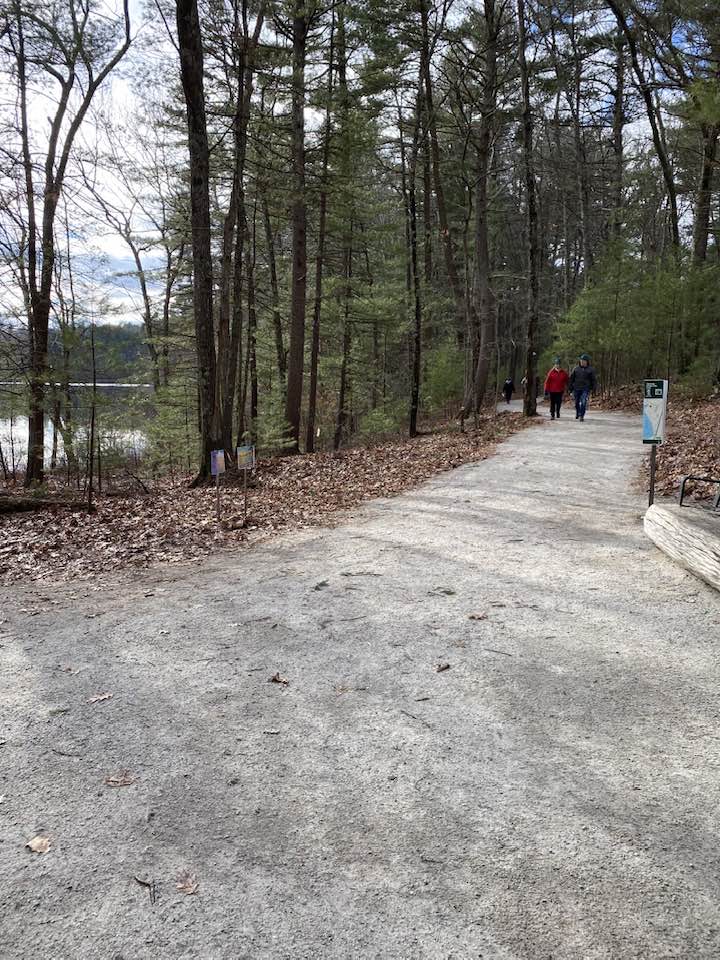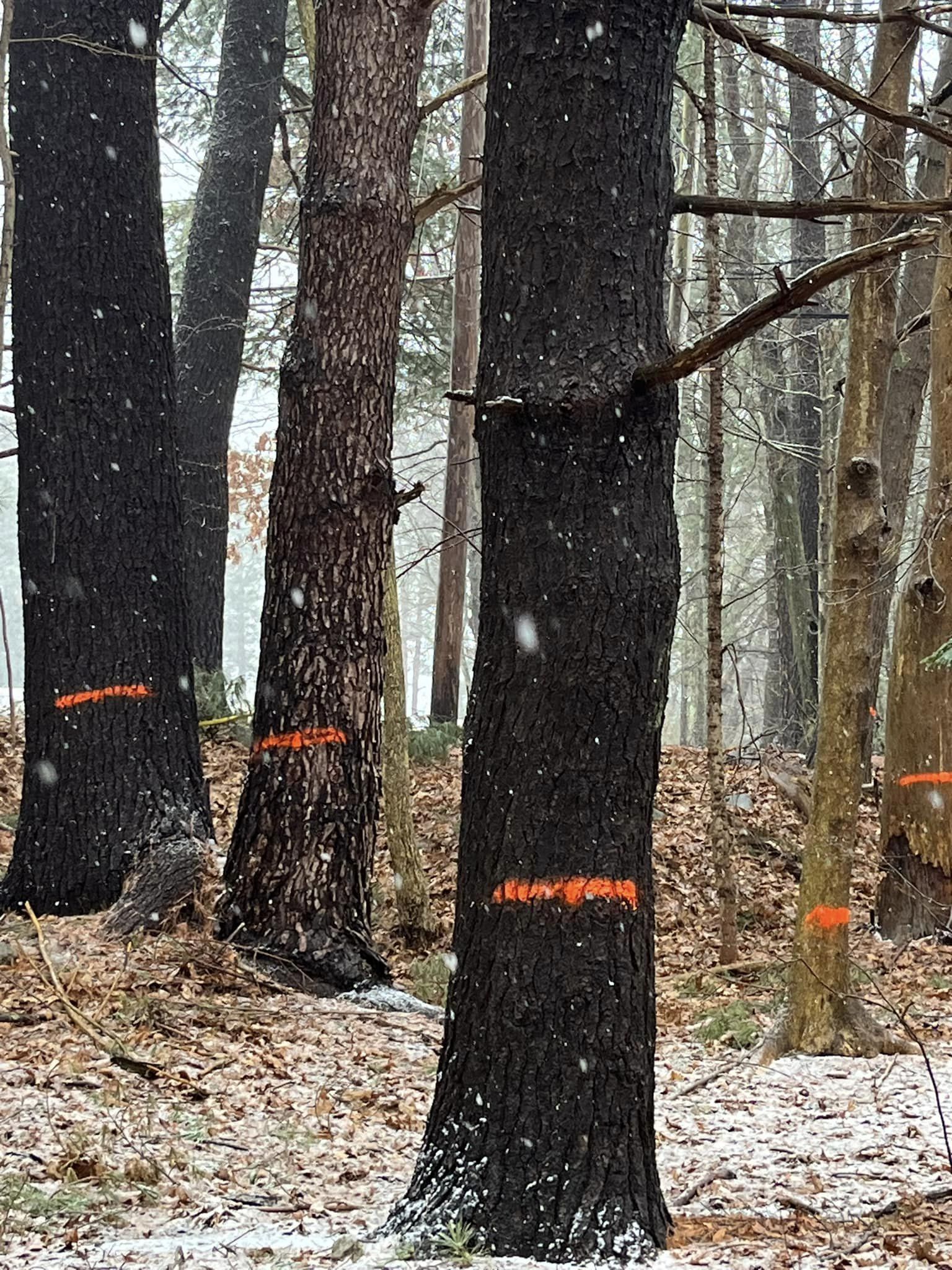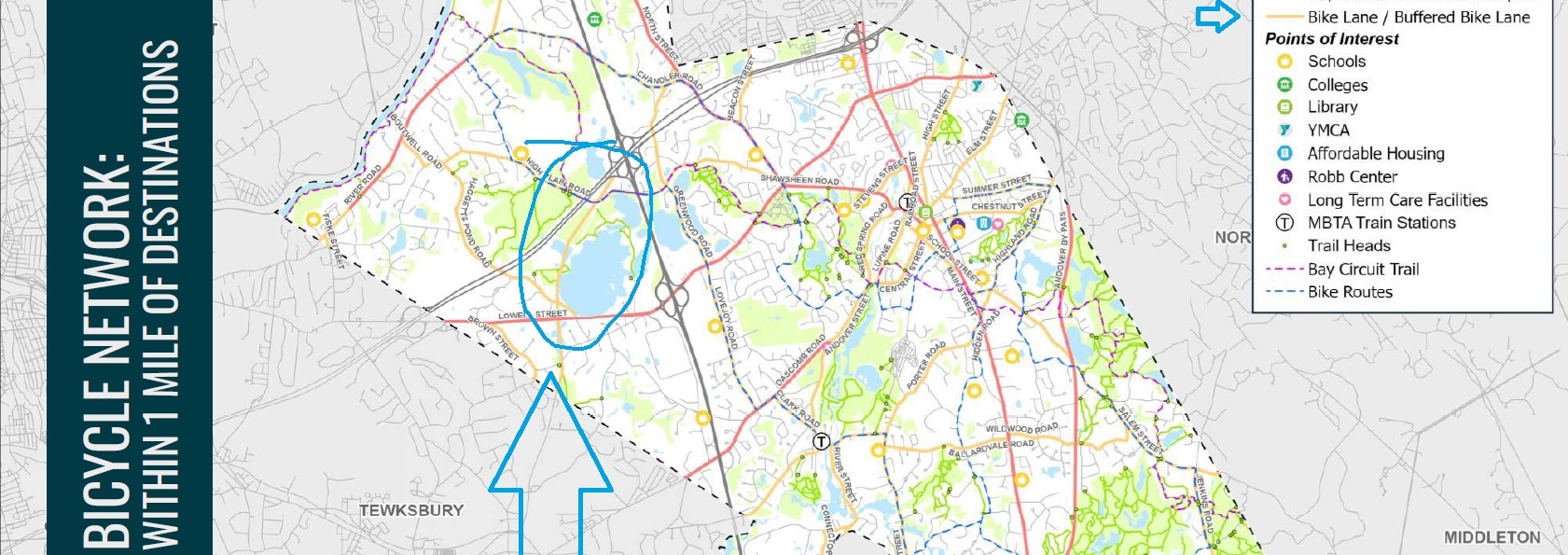Conserving our Green space and Wildlife
Unpaved Trails for Wildlife Conservation and Community Enjoyment
Conservation and Accessibility are NOT at odds.
Why It Matters: The beauty of Haggetts Pond lies not just in its waters but also in the lush surroundings. Most of the trail runs through Priority 1 habitats surrounding the pond that feature delicate balanced ecosystems and rare species. Visitors to the pond have in recent months catalogued as many as 70 species of mushrooms, multiple turtles, lady slipper orchids, uncommon trees such as river birches, and a number of delicate mosses, ground plants and flowers that are rare. You can find photos of these specimens, taken by Friends of Haggetts Pond members, throughout this website.
Haggetts Pond provides a prominent example of why our conservation laws exist. Asphalt paving and excavating the equivalent of an acre of soil, gravel and unknown contaminants from the rail bed are actions diametrically opposed to conservation. This is particularly true of habitats located in Priority 1 areas of our watershed. These wetlands are offered special protection under the Commonwealth of Massachusetts wetlands protection regulations as well as our own town’s bylaws because of their biodiversity as well as their ability to serve as natural filters of water.
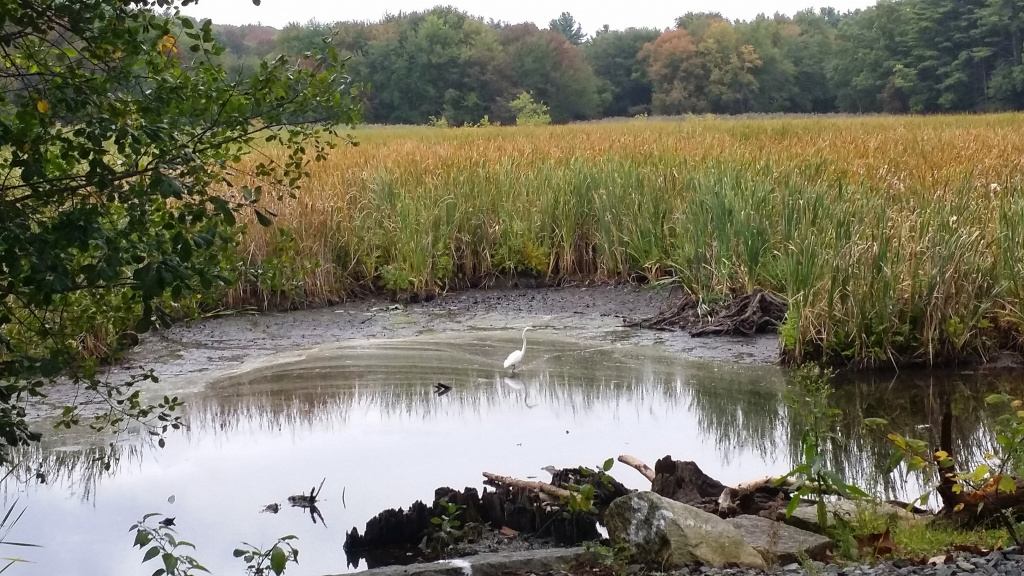
Learn More
The Impact of Excavation and Paving
Andover’s Connected Streets: An Asphalt Love Story
Priority 1 and 2 Zones
Why It Matters: Preserving Haggetts Pond does not mean preventing accessibility or “ADA compliance” on the trail. In fact, the trail is rated ADA accessible by third parties already (See Trail Link review of Haggetts Rail Link trail). “ADA compliance” can be a controversial label within the disabled community itself since it emphasizes wheelchair or motorized scooter access without regard to other types of disability. Even still, its basic requirement for woodland trails is a 3′ wide trail that is at minimum hard packed.

To understand this, lets first examine the latest design which favored by most of Andover’s town administration: the one developed by the BSC Design Group, a private for-profit environmental design company, which it revised in December of 2023 after that calls for an 8′ wide trail that will require excavating a 10 ft. wide path.
While a few advocates have argued that only a trail paved with asphalt will provide acceptable access to individuals in wheelchairs or with special conditions, the reality of accessibility is more complex. An asphalt paved trail while smooth in its first few years of existence will ensure a smoother ride for some, it will make the trail inaccessible for disabled residents with joint issues, surgery or with unique sensitivity to heat. Moreover, after a few years, we can expect the asphalt to break up as a result of frost heaves and other environmental facts (like the examples from our town’s sidewalks below) effectively turning this into a non-ADA accessible paved path.
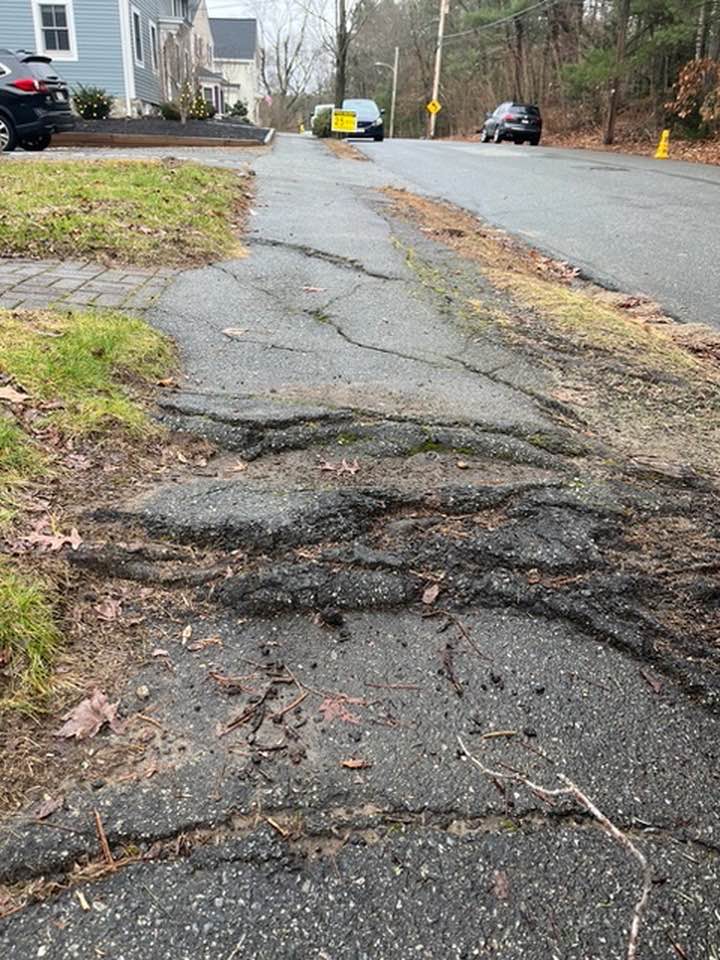
An alternative is a hard packed surface like stone dust, which can provide a sufficiently firm surface for wheel chairs to traverse. Such surfaces will mitigate heat during summer months (reducing the impact on the environment and our four legged friends’ paws!) and at the same time remain soft enough to accommodate hikers with joint issues or other sensitivities who cannot walk without discomfort on hard asphalt.
Stone dust actually costs 50% or more less than asphalt, is more porous (allowing precipitation to run off more easily), and does not contain the bitumin or other contaminants like heavy metals and PFAS typically found in asphalt.
